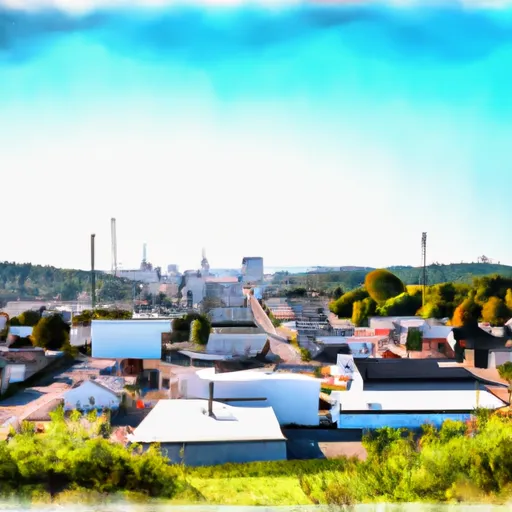-
 Snoflo Premium
Snoflo Premium
Get unlimited access to all our content
With no Ad interruptions! - Start Your Free Trial Login with existing account
Hellier
Eden Index
Climate
8.2
•
Recreation
7.0
•
Community
•
Safeguard
5.8/10

Hellier is a small unincorporated community located in Pike County, Kentucky. The climate in Hellier is classified as humid subtropical, with hot summers and cool winters. The area is characterized by hilly terrain and abundant forests. The hydrology constituents of Hellier are mainly centered on the nearby Russell Fork River, which provides opportunities for fishing, kayaking, and whitewater rafting. Hiking is also a popular activity in the area, with several trails located in nearby Breaks Interstate Park. Overall, Hellier offers a serene and peaceful environment for outdoor enthusiasts looking to explore the natural beauty of the region.
What is the Eden Index?
The Snoflo Eden Index serves as a comprehensive rating system for regions, evaluating their desirability through a holistic assessment of climate health, outdoor recreation opportunities, and natural disaster risk, acknowledging the profound impact of these factors on livability and well-being.
Climate Health Indicator (CHI): 8.2
Hellier receives approximately
1160mm of rain per year,
with humidity levels near 85%
and air temperatures averaging around
13°C.
Hellier has a plant hardyness factor of
6, meaning
plants and agriculture in this region thrive during a short period during spring and early summer. Most
plants will die off during the colder winter months.
By considering the ideal temperature range, reliable water supplies, clean air, and stable seasonal rain or snowpacks, the Climate Health Indicator (CHI) underscores the significance of a healthy climate as the foundation for quality living.
A healthy climate is paramount for ensuring a high quality of life and livability in a region, fostering both physical well-being and environmental harmony. This can be characterized by ideal temperatures, reliable access to water supplies, clean air, and consistent seasonal rain or snowpacks.
Weather Forecast
Streamflow Conditions
Big Sandy
Area Rivers
Big Sandy
Snowpack Depths
Big Sandy
Reservoir Storage Capacity
Big Sandy
Groundwater Levels
Recreational Opportunity Index (ROI): 7.0
The Recreational Opportunity Index (ROI) recognizes the value of outdoor recreational options, such as parks, hiking trails, camping sites, and fishing spots, while acknowledging that climate plays a pivotal role in ensuring the comfort and consistency of these experiences.
Access to outdoor recreational opportunities, encompassing activities such as parks, hiking, camping, and fishing, is crucial for overall well-being, and the climate plays a pivotal role in enabling and enhancing these experiences, ensuring that individuals can engage in nature-based activities comfortably and consistently.
Camping Areas
| Campground | Campsites | Reservations | Toilets | Showers | Elevation |
|---|---|---|---|---|---|
| Mount Mitchell State Park | 9 | 6,258 ft | |||
| High Knob | 77 | 3,608 ft | |||
| Old Forge | 15 | 2,154 ft | |||
| Cabwaylingo State Forest | None | 1,161 ft | |||
| Davy Crockett Birthplace | 88 | 1,392 ft | |||
| Horse Creek Rec Area | 34 | 1,759 ft | |||
| Warriors Path State Park | 134 | 1,326 ft | |||
| Persimmon Ridge City Park | 45 | 1,733 ft | |||
| Rock Creek Rec Area | 80 | 2,348 ft | |||
| Bark Camp | 71 | 2,839 ft |
Nearby Ski Areas
Catastrophe Safeguard Index (CSI):
The Catastrophe Safeguard Index (CSI) recognizes that natural disaster risk, encompassing floods, fires, hurricanes, and tornadoes, can drastically affect safety and the overall appeal of an area.
The level of natural disaster risk in a region significantly affects safety and the overall livability, with climate change amplifying these risks by potentially increasing the frequency and intensity of events like floods, fires, hurricanes, and tornadoes, thereby posing substantial challenges to community resilience and well-being.
Community Resilience Indicator (CRI):
The Community Resilience Indicator (CRI) recognizes that education, healthcare, and socioeconomics are crucial to the well-being of a region. The CRI acknowledges the profound impact of these elements on residents' overall quality of life. By evaluating educational resources, healthcare accessibility, and economic inclusivity, the index captures the essential aspects that contribute to a thriving community, fostering resident satisfaction, equity, and social cohesion.

